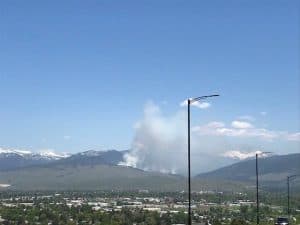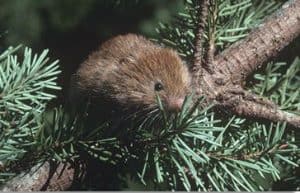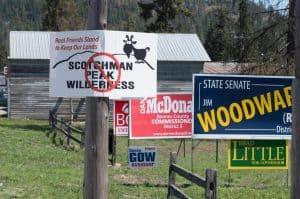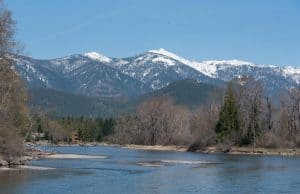
Harlequin duck (Histrionicus histrionicus)
The Forest Service created through its directives (FSM 2670) a program to manage sensitive species, which it defined as species “identified by a regional forester for which population viability is a concern.” Sensitive species “must receive special management emphasis to ensure their viability and to preclude trends toward endangerment that would result in the need for federal listing.” Up until now, forest plans had to include direction for sensitive species “to ensure viable populations throughout their geographic ranges.” In addition, all plans and projects required a biological evaluation (BE) for each sensitive species “to ensure that Forest Service actions do not contribute to loss of viability … or contribute to trends toward Federal listing.” The BE became an important tool for biologists to use at the project level.
The 2012 Planning Rule requires identification of Species of Conservation Concern (SCC). They are defined as those for which “the regional forester has determined that the best available scientific information indicates substantial concern about the species’ capability to persist over the long-term in the plan area.” The plan must maintain viable populations of these species, but there are no requirements for future projects to address them; compliance with forest plan requirements for SCCs is presumed to meet the needs of these species. This elevates the importance of plan components for these species.
The Forest Service issued an internal letter to regional foresters on June 6, 2016 explaining that it would phase out the sensitive species designation. It recognized that, “As noted in the preamble to the 2012 planning rule, “[Regional Forester Sensitive Species] are…similar to species of conservation concern.” It also stated that, “Applying both systems on the same administrative unit would be redundant.” Consequently, “Once a revised plan is in effect, the Regional Forester’s Sensitive Species list no longer applies to that unit.” The letter acknowledges that a biological evaluation must still be prepared for a revised forest plan. (Interestingly, the letter had only a planning file code, so it did not necessarily go to biologists.)
The Forest Service is thus implementing a substantial change in wildlife policy, with no prior public involvement, through individual forest plan revisions. This should mean that the forest planning process would include a clear explanation for the public that some species are no longer sensitive, and that no species will be evaluated for future projects (outside of any effects analysis NEPA might require). In particular, there needs to be a reasoned explanation of what facts have changed for those species where viability was a concern, but isn’t any more. The forest plan EIS must also consider the effects on sensitive species of removing the existing requirements to evaluate and maintain their viability at the project level (in comparison to the no-action alternative).
Instead, the Flathead has mostly hidden any information about sensitive species. Most existing sensitive species (17 animal species) are not designated as SCC (3 animal species), but there is no list of sensitive species in any of the Forest documents (though they can be identified from a list of all species included in an EIS appendix). There is no biological evaluation as required by the Forest Service Manual and the 2016 letter. There is a summary of “biological determinations” for sensitive species, but it is not listed among the planning documents on the website. It cites the forest plan EIS as the basis for its one- or two-sentence summaries. The EIS does not mention sensitive species at all, but it includes effects analysis for species that are/were sensitive.
While it is therefore possible to find some information on sensitive species, the Forest does not explain the significant implications of that information. It does not disclose the changes in scientific information that provide the rationale for declassifying them as at-risk species, and it does not explain how the sensitive species policy changes will affect future management of this Forest. These seem like fatal (arbitrary) omissions.




